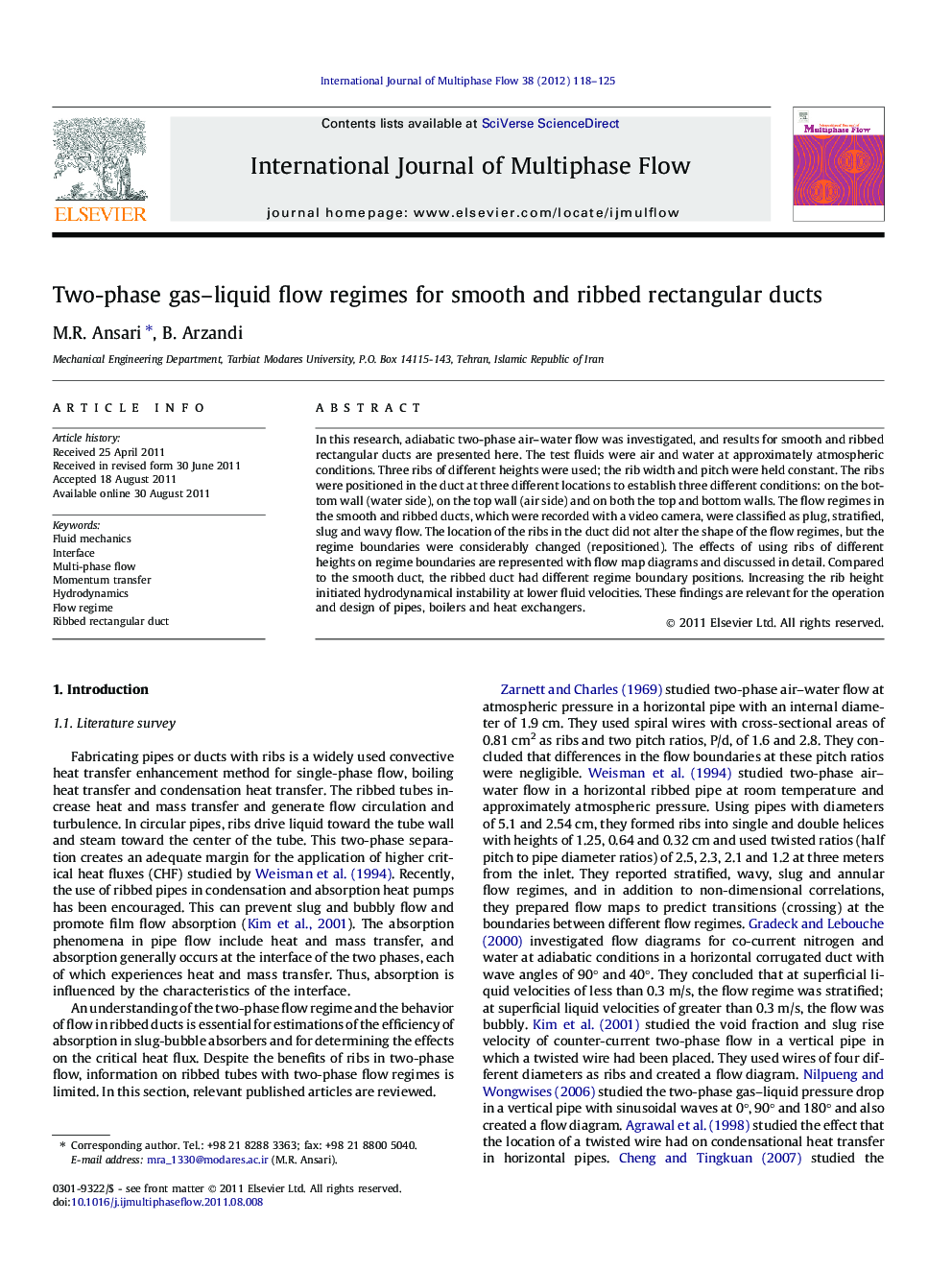| Article ID | Journal | Published Year | Pages | File Type |
|---|---|---|---|---|
| 667355 | International Journal of Multiphase Flow | 2012 | 8 Pages |
In this research, adiabatic two-phase air–water flow was investigated, and results for smooth and ribbed rectangular ducts are presented here. The test fluids were air and water at approximately atmospheric conditions. Three ribs of different heights were used; the rib width and pitch were held constant. The ribs were positioned in the duct at three different locations to establish three different conditions: on the bottom wall (water side), on the top wall (air side) and on both the top and bottom walls. The flow regimes in the smooth and ribbed ducts, which were recorded with a video camera, were classified as plug, stratified, slug and wavy flow. The location of the ribs in the duct did not alter the shape of the flow regimes, but the regime boundaries were considerably changed (repositioned). The effects of using ribs of different heights on regime boundaries are represented with flow map diagrams and discussed in detail. Compared to the smooth duct, the ribbed duct had different regime boundary positions. Increasing the rib height initiated hydrodynamical instability at lower fluid velocities. These findings are relevant for the operation and design of pipes, boilers and heat exchangers.
► Two-phase air–water flow was investigated for smooth and ribbed rectangular ducts. ► The ribs effects on regime boundaries were presented with new flow map diagrams. ► Compared to the smooth duct, the ribbed duct had different boundary positions. ► Increasing the rib height initiates physical instability at lower fluid velocities.
